|
|
Post by jack88 on Dec 19, 2022 18:08:41 GMT
Hello all! I am back after a hiatus with a new piece I'd like to share and discuss one of the most high-profile French units of the Napoleonic wars—Les Mameluks de la Garde Impériale. I've been earning a master's degree in military history while teaching military history and no longer flying. Information about the Mameluke Guard is scarce, but the little we know about this fascinating unit is enough.  My new sword is NOT from the Mameluke Guard, although mounted by Duc, who did swords for various units of the Imperial Guard; this sword does not fit any of the few examples we've seen, which I'll discuss below.  On July 1, 1798, Napoleon Bonaparte invaded Egypt in an attempt to cut trade between Britain and her colonies. This expedition echoed Caesar, whom Napoleon revered, and brought the French into direct conflict with the ruling Mamluke elite of Egypt, who ruled under the purview of the Ottoman Turks. Napoleon famously defeated them at the Battle of the Pyramids. Still, the impetuous ferocity of the Mamlukes impressed him and planted the idea to form a Mameluke unit within the French army.  Initially, three companies of roughly 100 men each formed under the name of the "Mamluks de la Republique," but eventually, roughly 150 men would form the core of Mamluke guardsmen. All officers consisted of Frenchmen, but the troopers "were a mixture of Syrians, Greeks, Circassians, Crimeans, Armenians, Egyptians, Georgians, Arabs, Turks, Albanians, Hungarians, Maltese, and Tunisians. 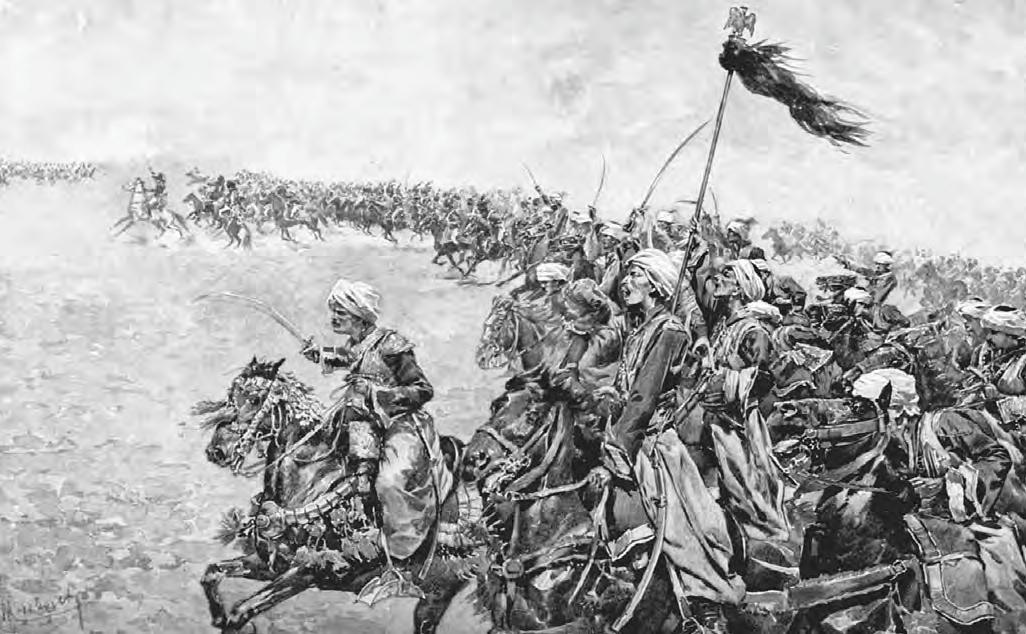 The Mamlukes matched with the chasseurs à cheval de la Garde impériale and formed the basis of Napoleon's bodyguards. In 1813, a second company consisting of Frenchman was formed, with Young Guard status.  Monsieur Ducel—one of the last survivors of the Napoleonic Wars—colorized. Notice his blade does not fit the troopers model shown below, which questions whether this elite unit had capability to equip as pleased. Monsieur Ducel—one of the last survivors of the Napoleonic Wars—colorized. Notice his blade does not fit the troopers model shown below, which questions whether this elite unit had capability to equip as pleased.The Mamelukes carried various weapons, similar to chasseurs, but each had an assortment that could include: a carbine, two pistols, a saber, a dagger, mace, and eventually a battle axe. The official pattern of the Mameluke Guard now represents the holy grail of First Empire sword collecting, and the officers model even more so. 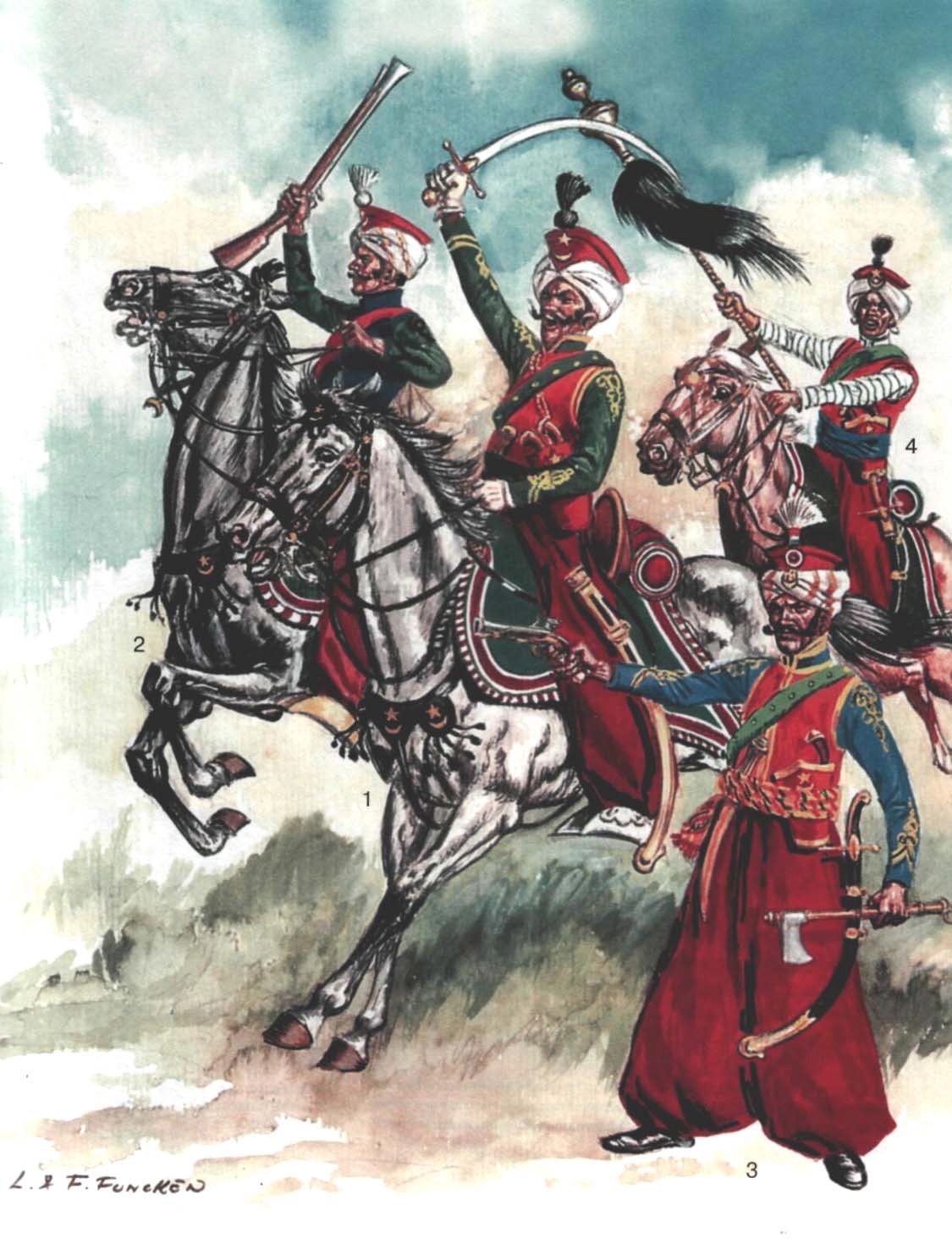 Here is the troopers version: 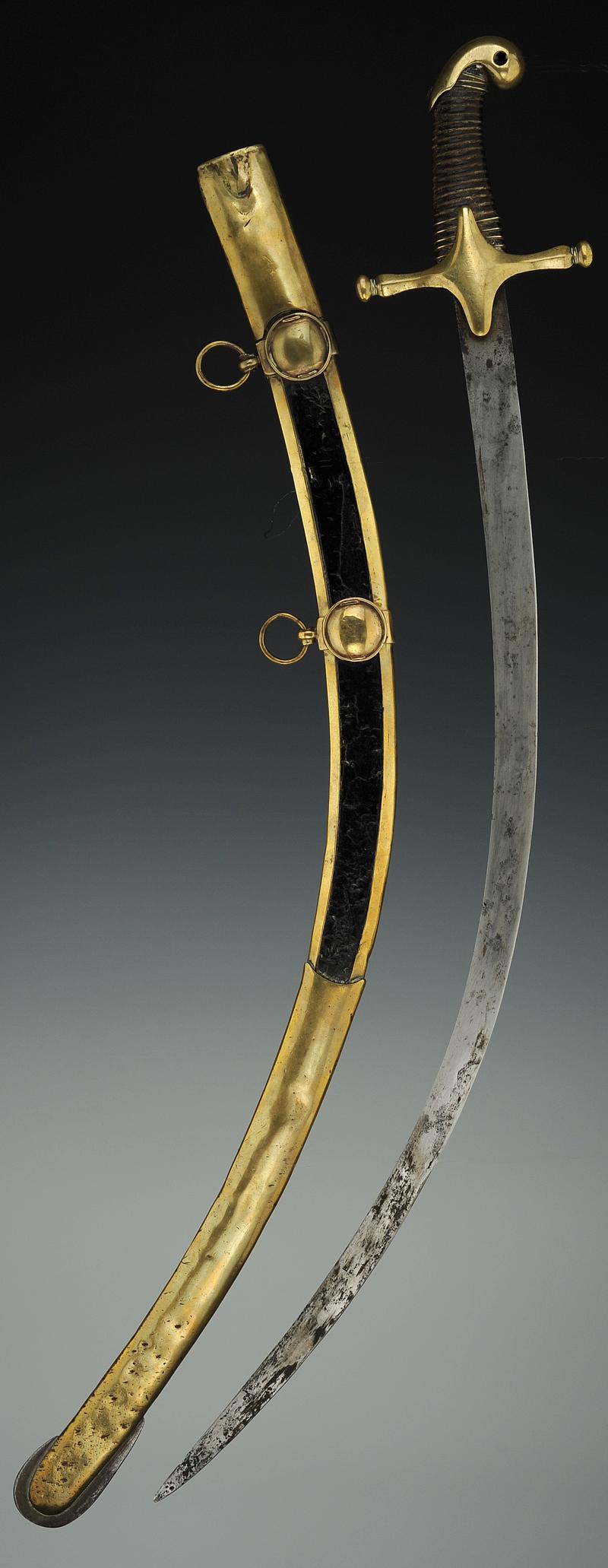 www.bertrand-malvaux.com/fr/p/8303/sabre-troupe-des-mamelouks-de-la-garde-imperiale-premier-modele-1802-consulat-premier-empire.html www.bertrand-malvaux.com/fr/p/8303/sabre-troupe-des-mamelouks-de-la-garde-imperiale-premier-modele-1802-consulat-premier-empire.html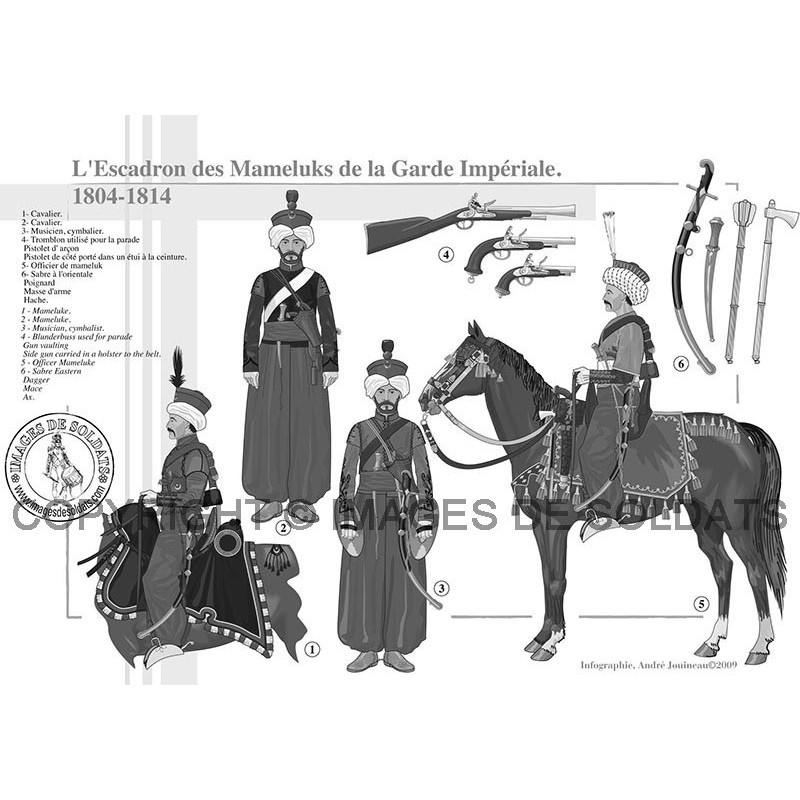 Here is the incredibly rare officers model: 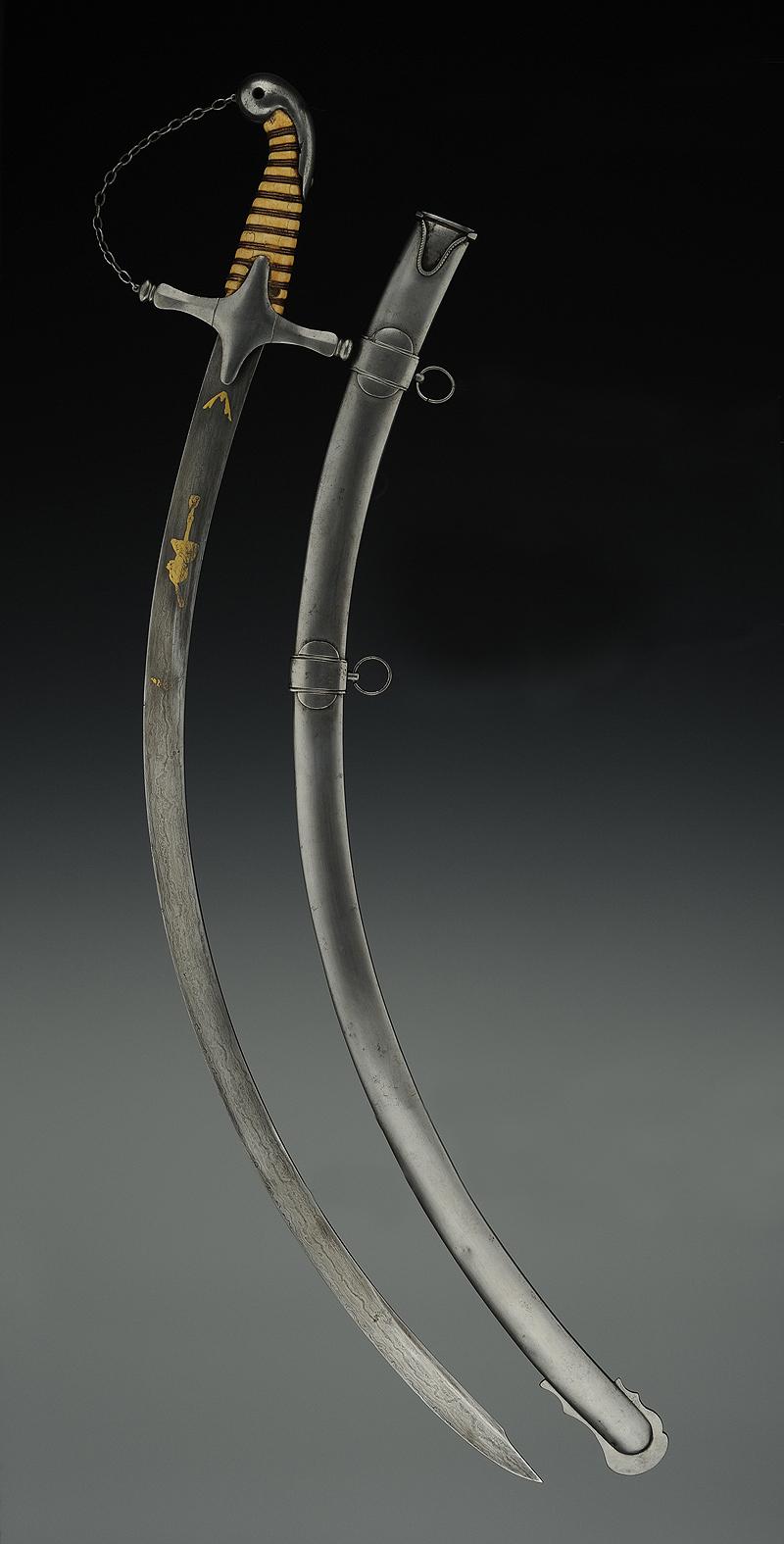 www.bertrand-malvaux.com/p/7238/sabre-d-officier-des-mamelouks-de-la-garde-imperiale-premier-empire.html www.bertrand-malvaux.com/p/7238/sabre-d-officier-des-mamelouks-de-la-garde-imperiale-premier-empire.htmlThis begs to questions whether the officer's model was actually a pattern or if the officers simply had their own swords, with all of the looted blades from Egypt. 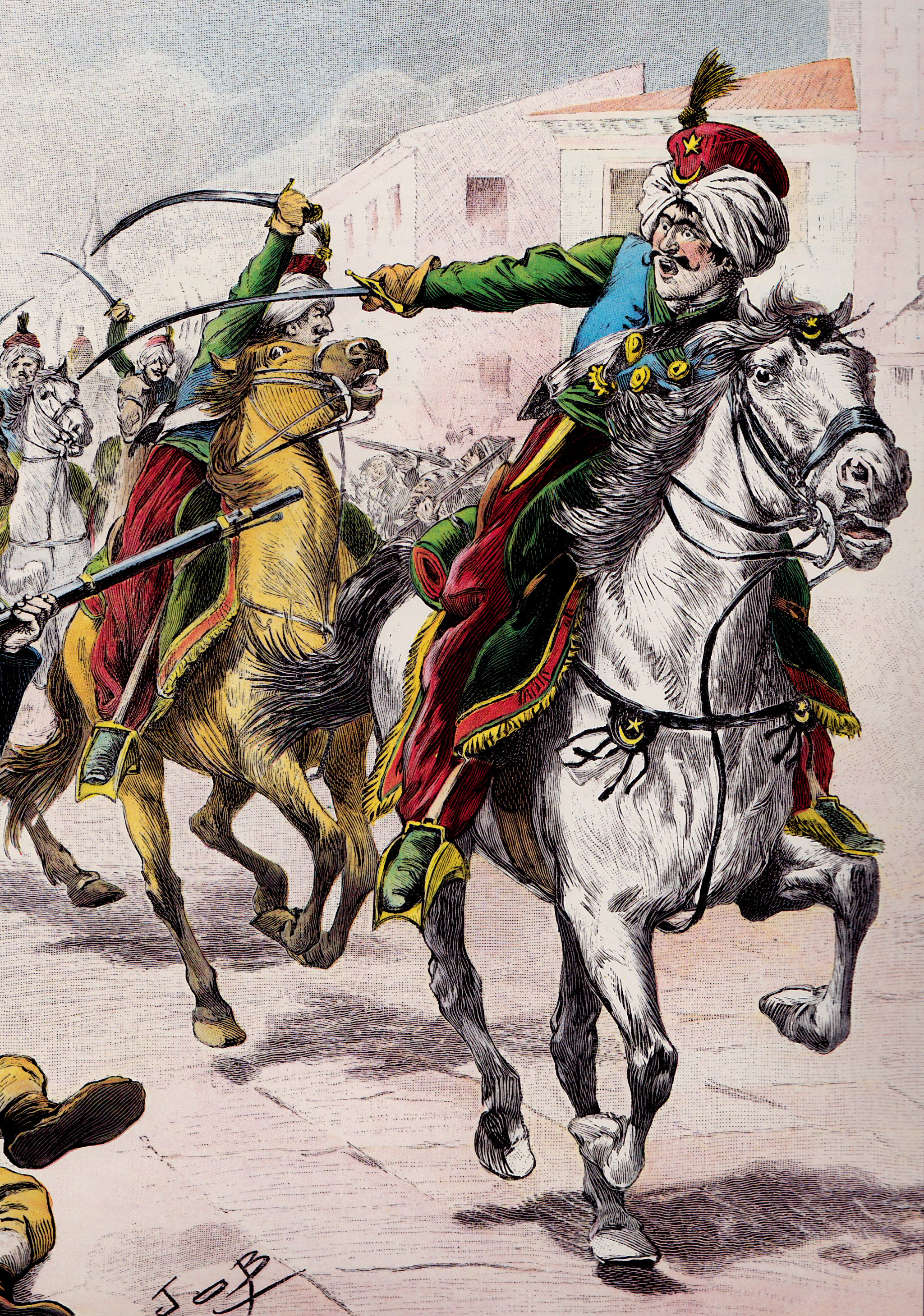 The Mamelukes famously showed their ferocity during the revolt of Madrid, where they massacred the local population and gained the animosity of the Spaniards. 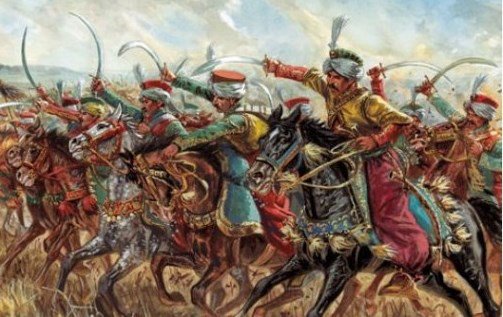 The Mameluke Guard fought at Austerlitz bravely and bolstered their fierce reputation. I recognize the history lesson is light, but little is written about this illustrious unit. 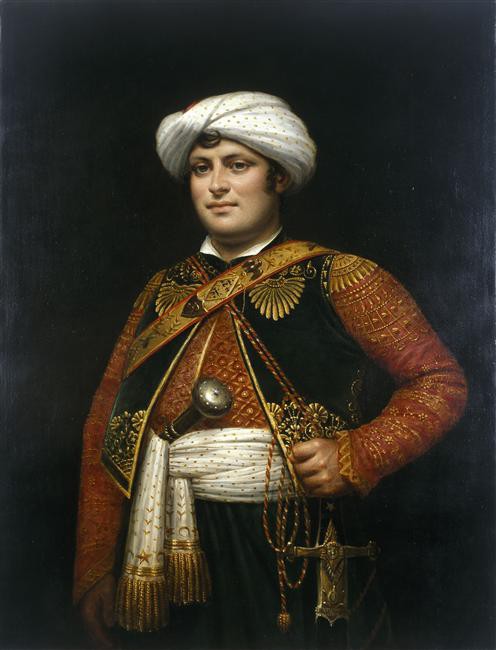 My sword:  When first seeing this sword listed on the merchant's website, I suspected the blade was not of French origin. After passing the image around a bit, a friend backed my suspicion, and I decided my collection was short a First Empire Mameluke.  The missing langets and scabbard appear post-Napoleonic to me, but some attributes are controversial, and I've never shied away from controversy.  The blade is 18th-early 19th century Ottoman-made; this was determined by the grain of wootz called "sham" wootz.  Now for the seriously controversial part: the two Klingenthal inspection stamps on a wootz blade. One is Bisch, and the other is Marion, which provides a narrow window to when Klingenthal tested this blade—1809-1811. This is controversial because Klingenthal rarely stamped officer's blades and never a foreign blade. The stamps indicate a "pass" of a two-part test. The sword was smacked against wood and bent to ensure it would spring back to its natural form. This logically causes a couple of problems. Why would Klingenthal test a wootz blade? And would a wootz blade pass the second test of bending? Wootz steel is notoriously stiff and unbending, which enabled the ability to sharpen them incredibly at the cost of brittleness. Surely some of the hundreds (likely thousands) of Egyptian campaign looted wootz blades were tested, but would Klingenthal stamp a blade they didn't make?  The guard is stamped "Duc" who furbished swords for both the Imperial and Royal Guards.  The sheath has this interesting advanced drawing mechanism, enabling smooth sword drawing.   ![]() The scabbard has traces of the original bluing, with obvious wear.  Now this sword caused a bit of consternation on the French forum. I noticed some of the more knowledgeable posters stayed away, likely due to the unknown variable. Others got angry that I was right about the sword being wootz and Ottoman (I wouldn't ask a Frenchman about Ottoman blade provenance.) There seems to be a language confusion, maybe because of the translator about the difference between damascus and wootz in Western languages. Notice the difference in appearance from the officer's model:  Klingenthal made "damascus" steel blades (which is really laminated or folded steel) and tested working with real wootz, but never imitated Ottoman work well enough to pass off a sword like this. (If they did, this is maybe the only one in existence.) So what is this sword!? I have concluded with a few options which I've ordered in my believed probability: The blade is Ottoman, either looted from Egypt or bought and brought back to France. Tested by Klingenthal at the request of a cavalry officer and mounted by Duc. Anything mounted by Duc cost big bucks for the luxury brand name, so I don't see a problem with the blade being tested by Klingenthal inspectors. The blade is domestic French made with a wootz ingot acquired from the east. The yelman is small enough that maybe the French actually got it correct. Then the stamps are all correct in line with production. The stamps are faked. The Duc stamp is close enough to some other examples that we'll never know if it's real or not. The inspector stamps are perfect, match other swords with the same stamps exactly. But why would a forger stamp a wootz blade? Wootz blades fetch high dollar without stamps in their original form. Forgers know antique swords well enough not to mess that up because they could charge more otherwise. Maybe stupid forgers? I find this possibility very unlikely; anyone capable of replicating inspector stamps perfectly would know how to recognize a non-French blade. Above all, this sword is an incredibly well-made battle sword. Whether Duc mounted it or not, the purchaser spent top dollar to have an Ottoman blade mounted in quality western fittings. The blade is very skinny, less than an inch wide in most places and only just over an inch at the yelman, but 31" long. I no longer have an accurate scale and will have to add the weight in later, but its perhaps my lightest sword. Thanks all for the read! Looking forward to any more opinions brought forward. I've been busy writing strategic analysis and modern history, so reaching back to Napoleonic was different. Too bad so little is known about the Mameluke Guard. 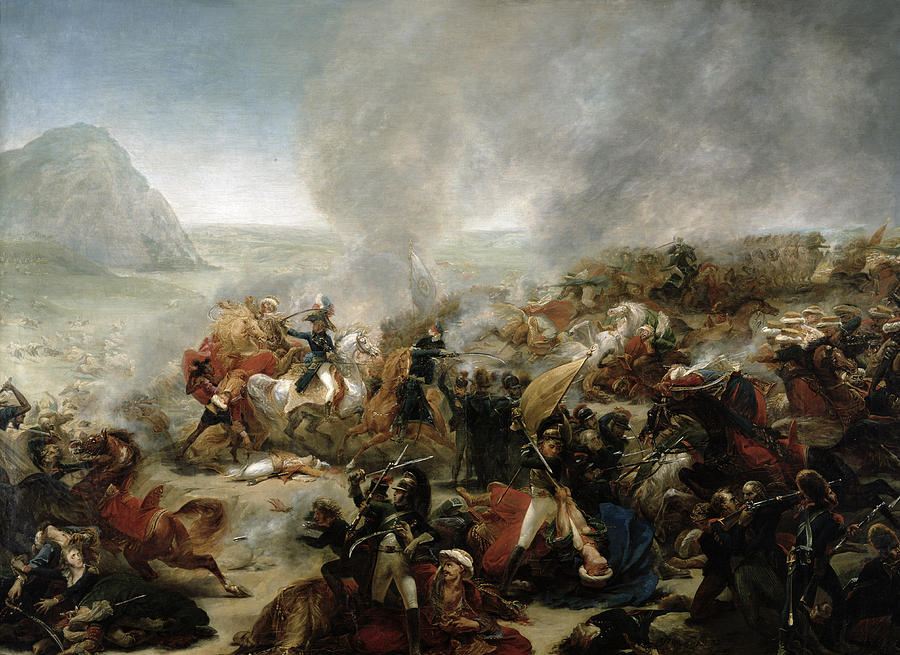 www.napolun.com/mirror/napoleonistyka.atspace.com/IMPERIAL_GUARD_cavalry_1.html#frenchguardcavalrymamelukeswww.napoleon.org/en/history-of-the-two-empires/paintings/portrait-of-raza-roustam-mamluk-and-napoleons-bodyguard/military-history.fandom.com/wiki/Mamelukes_of_the_Imperial_Guarden.wikipedia.org/wiki/French_campaign_in_Egypt_and_Syriaen.wikipedia.org/wiki/Mamelukes_of_the_Imperial_Guard www.napolun.com/mirror/napoleonistyka.atspace.com/IMPERIAL_GUARD_cavalry_1.html#frenchguardcavalrymamelukeswww.napoleon.org/en/history-of-the-two-empires/paintings/portrait-of-raza-roustam-mamluk-and-napoleons-bodyguard/military-history.fandom.com/wiki/Mamelukes_of_the_Imperial_Guarden.wikipedia.org/wiki/French_campaign_in_Egypt_and_Syriaen.wikipedia.org/wiki/Mamelukes_of_the_Imperial_Guard |
|
|
|
Post by maxdchouinard on Dec 19, 2022 23:06:34 GMT
"This is controversial because Klingenthal rarely stamped officer's blades and never a foreign blade. " Just to bring clarity to this point. Klingenthal always stamped officer blades they made. The one exception being those that were sold by the entrepreneur who managed the facility. In fact, many of the blades sold by Coulaux under his own name, were Solingen products, as noted by authors in the period. Coulaux employed and paid the controllers, and could have easily asked them to stamp those blades, but the law governing the manufacture did not allow it. Here is the relevant passage from the law controlling the French blade manufactures from 1808. 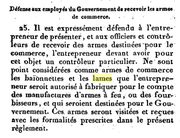 In short, it is expressly forbidden to the entrepreneur to present, and to officers and controllers to receive, any blades destined for the private market. The entrepreneur must employ to this end his own controller. Exception being of blades that the entrepreneur is authorized to make for firearms manufactures, or to furbishers, and which are destined to the government. We know your blade was not inspected by one of Coulaux's private controllers, and Marion was forbidden to inspect such a blade as a State officer. The only exception would be if this blade was commissioned by the government, like most stamped officer blades we can find (which were sent to authorized depots), but they would still need to be made in Klingenthal. If we even imagine that this was the case, that this blade was stamped because it simply passed inspection, there is another issue at hand. Inspection is more than two parts, it also involve making sure the blade fits the dimensions of the model. Now, as I demonstrated in our discussion, this blade fits almost to a tee the Mameluke model produced there. Of all the variations in curvature, that it managed to fit the model is quite a big coincidence. Klingenthal made cast damascus blades (I am using damascus not because of a translation error, but to avoid confusion with actual Indian made wootz steel), both from cast and pattern welded steel, as is documented, but there is no documented case of a foreign made blade stamped by Klingenthal. So in my opinion, those stamps are either there because the blade was made in Klingenthal, or someone added them. Now, this is quite a theory to say that Klingenthal produced swords that could fool experts, and I would agree that other examples would be needed to ascertain this. Whatever the case may be, it's definitely an interesting mystery! |
|
|
|
Post by pellius on Dec 20, 2022 1:26:47 GMT
Wow
Thanks for sharing and for the write up!
I’m looking forward to reading it more thoroughly.
|
|
|
|
Post by treeslicer on Dec 20, 2022 2:01:36 GMT
Thanks very much for this outstanding post. I can certainly understand the controversy. As we all know, certainly no French officer, official, or government bureaucrat would ever bend or ignore a regulation.  
|
|
|
|
Post by maxdchouinard on Dec 20, 2022 4:30:36 GMT
Thanks very much for this outstanding post. I can certainly understand the controversy. As we all know, certainly no French officer, official, or government bureaucrat would ever bend or ignore a regulation.   Maybe, but to what end? The whole manufacture staff would risk hefty fines and sacking to help Duc sell this one sword? I can only imagine the scene at the shop. -Oh, I see this blade has Klingenthal stamp. What model is it? -No, that's actually from Turkey. -What? Then why is it stamped by the Klingenthal State inspector and controller? -Because I bribed them so they would bend it and slap it against some wood. -Ok... And they accepted to do this even though they may lose their job and their house? -Yeah... I guess that wasn't very smart of them... -So if I buy this sword, everytime someone looks at it I will have to awkwardly explain that it was illegally stamped? -Yeah... -Also, your name is literally on it, and so are the personal stamps of these two dumdums... Are you all trying to get caught on purpose? -... |
|
|
|
Post by treeslicer on Dec 20, 2022 5:33:39 GMT
Thanks very much for this outstanding post. I can certainly understand the controversy. As we all know, certainly no French officer, official, or government bureaucrat would ever bend or ignore a regulation.   Maybe, but to what end? The whole manufacture staff would risk hefty fines and sacking to help Duc sell this one sword? I can only imagine the scene at the shop. -Oh, I see this blade has Klingenthal stamp. What model is it? -No, that's actually from Turkey. -What? Then why is it stamped by the Klingenthal State inspector and controller? -Because I bribed them so they would bend it and slap it against some wood. -Ok... And they accepted to do this even though they may lose their job and their house? -Yeah... I guess that wasn't very smart of them... -So if I buy this sword, everytime someone looks at it I will have to awkwardly explain that it was illegally stamped? -Yeah... -Also, your name is literally on it, and so are the personal stamps of these two dumdums... Are you all trying to get caught on purpose? -... No, I figure someone (probably of considerable rank and prestige) had the sword retrostamped to conform with regulations, and still go on swinging his old friend from his days with La Grande Armée. I suspect that the blade originally might have been a bringback from the Battle of the Pyramids, even if it is as close to later Klingenthal specs as Uhlan said in the reply that he later deleted. |
|
pgandy
Moderator
Senior Forumite
Posts: 10,296
|
Post by pgandy on Dec 20, 2022 12:26:46 GMT
Thanks for the history lesson. As for the sword, well it will probably be one of those unsolved mysteries.
|
|
Uhlan
Member
Posts: 3,121
|
Post by Uhlan on Dec 20, 2022 12:50:45 GMT
,,even if it is as close to later Klingenthal specs as Uhlan said in the reply that he later deleted.''
I deleted a reply? Cannot remember when, where or why?
Reading the above comments I remembered that Inspectors/Directors were allowed to sell a certain amount of blades per year to enhance their income. Could this be the case here? I mean, this rule could allow for the blade to be stamped without any repercussions from the legal department? A work around the law fagging sort of?
Also, still have this notion the ,,scabbard clip or hook, whatever'' has something Austrian about it.
I dunno. Just ,,feelz''. :)
Anyway, glad you posted the blade here Jack. It's good to have you back.
Cheers.
|
|
|
|
Post by jack88 on Dec 20, 2022 14:49:13 GMT
Wow Thanks for sharing and for the write up! I’m looking forward to reading it more thoroughly. Thanks Pellius, it is an interesting piece, one I couldn't pass! Thanks very much for this outstanding post. I can certainly understand the controversy. As we all know, certainly no French officer, official, or government bureaucrat would ever bend or ignore a regulation.   The guys on FB seem equally torn between it being a French production and it being Ottoman. The Ottoman experts seem sure it is "sham" wootz, while the Western leaning collectors believe its maybe one of the test blades produced by Klingenthal when they tested wootz production. While I'd love to believe the second (would make it nearly one-of-a-kind) I do believe it is eastern made wootz as well. I'm the only one that has seen the pattern come out during etch before being polished and refined, it looked just like any other wootz blade. This sword was incredibly difficult to etch, worse than the other two. The pattern simply did not want to stay once the polishing process began. I should've taken photos, but my hands covered in acid with gloves on makes it difficult. Thanks very much for this outstanding post. I can certainly understand the controversy. As we all know, certainly no French officer, official, or government bureaucrat would ever bend or ignore a regulation.   Maybe, but to what end? The whole manufacture staff would risk hefty fines and sacking to help Duc sell this one sword? I can only imagine the scene at the shop. -Oh, I see this blade has Klingenthal stamp. What model is it? -No, that's actually from Turkey. -What? Then why is it stamped by the Klingenthal State inspector and controller? -Because I bribed them so they would bend it and slap it against some wood. -Ok... And they accepted to do this even though they may lose their job and their house? -Yeah... I guess that wasn't very smart of them... -So if I buy this sword, everytime someone looks at it I will have to awkwardly explain that it was illegally stamped? -Yeah... -Also, your name is literally on it, and so are the personal stamps of these two dumdums... Are you all trying to get caught on purpose? -... It could be a situation we can't even think of, maybe the officer, of higher rank went back after sword was completed and wanted it tested after being bought. Technically the sword wouldn't be "for trade" as the regulation stipulates. Or it could've been an early test to see whether an Ottoman blade would pass the Klingenthal tests. Speaking from military experience, regulations are often ignored even blatantly, especially when it comes to gear. I spent two deployments walking around in non-regulation boots, non-steel toe while on a ship. Anyone looking could see that I was blatantly ignoring a regulation, but who's going to question an officer? Only a higher ranking officer, and they don't generally care about something so stupid. Thanks for the history lesson. As for the sword, well it will probably be one of those unsolved mysteries. I honestly feel like I shorted the history on this one, in comparison to the stuff I've been publishing this is weak sauce, but the sources just don't exist on these guys. Time is always a factor as well.. ,,even if it is as close to later Klingenthal specs as Uhlan said in the reply that he later deleted.'' I deleted a reply? Cannot remember when, where or why? Reading the above comments I remembered that Inspectors/Directors were allowed to sell a certain amount of blades per year to enhance their income. Could this be the case here? I mean, this rule could allow for the blade to be stamped without any repercussions from the legal department? A work around the law fagging sort of? Also, still have this notion the ,,scabbard clip or hook, whatever'' has something Austrian about it. I dunno. Just ,,feelz''.  Anyway, glad you posted the blade here Jack. It's good to have you back. Cheers. The retroactive stamp theory could possibly make sense. The entire sword does give 1820-30s vibes, and Duc was still mounting swords in that timeframe. |
|
|
|
Post by maxdchouinard on Dec 20, 2022 15:29:23 GMT
No, I figure someone (probably of considerable rank and prestige) had the sword retrostamped to conform with regulations, and still go on swinging his old friend from his days with La Grande Armée. I suspect that the blade originally might have been a bringback from the Battle of the Pyramids, even if it is as close to later Klingenthal specs as Uhlan said in the reply that he later deleted. The poincons are not really part of regulation, they are only an internal quality control for the Klingenthal staff, state employees and regimental armourers to see that a blade was approved to be sent to a depot. Officers were free to buy any blade they wanted, stamped or not, as long is it matched the dress regulations, though up to 1812 dress regulations were commonly ignored. I guess Napoleon himself could walk in the manufacture and order the staff to break the law, anything is possible at this point, but again it would be a strange choice, and even more so to make the infraction so clearly visible. They could just as easily do it without stamping, and as the process itself was known, anyone could have performed it with the right tools and skillset. And really, the simplest solution was just to have the entrepreneur's own controller test it and stamp it. He would be right in the same building, and this way, you would get the same result without anyone risking prison time or court martial. I just see no reason why anyone would agree to go through such a route for such little gain. As for having the piece retroactively stamped, the poincons were kept under key at the manufacture, and you were not allowed to leave with them. Bick was there a long time, but Marion only stayed a few years before continuing with his military career. That would be the entrepreneur, the person hired by contract to manage production at the manufacture. As they were often already in the business of furbishing swords, they were allowed to maintain that business to supplement their income in case government orders were not enough, but as the law posted above notes, it was forbidden for the inspectors, who were artillery officers, to be involved in that business. The reason why inspectors usually stayed only a year or two was probably to maintain distance with the entrepreneur and staff and avoid corruption. The entrepreneur needed to hire his own controller if he wanted to have his own blades tested and stamped. Hence why you sometimes find blades with a single unknown poinçon, as official records were not kept for those. Entrepreneurs were also allowed to sell blades that were rejected at inspection, so these blades usually have only a controller stamp, or none at all. That may only have been allowed later on as I didn't find any mention of this for the Napoleonic era. |
|
Uhlan
Member
Posts: 3,121
|
Post by Uhlan on Dec 20, 2022 18:08:06 GMT
So what do we have here?
We can go on weaving all kinds of theories, but that only muddies the waters.
Where do we, or better, the blade, stand at this point?
To me, from what I see in the pictures, but I hope Jack can bring out the pattern some more, the blade was not pattern welded, nor Damast in the Western sense, so I do not think this is a product of Klingenthal and Jack's Turkish friend is right.
They would have found the secret of Wootz making that was lost (here) sometime after 1750 or there abouts.
They would have made a financial killing. Gilded carriages, chateaux at the Loire, lots and lots of very and I mean VERY, nice lady friends, the works....
I don't think I ever read about that happening.
Pity though.
Back to churning out them F..ing M1822 blades guys...
Cheers.
|
|
|
|
Post by jimmythedonut on Dec 20, 2022 21:16:22 GMT
Thanks for the write-up! I'll avoid wading into anything here but I have often seen these a lot thinner than the standard Military Sabre of the era. How narrow would you estimate it being? I think the thinnest sabre I have is a tad under 5mm wide at the ricasso, though that's a very weird "narrow skinny dress sword but surprisingly robust and stout to hold" model.
|
|
|
|
Post by maxdchouinard on Dec 20, 2022 22:35:18 GMT
So what do we have here? We can go on weaving all kinds of theories, but that only muddies the waters. Where do we, or better, the blade, stand at this point? To me, from what I see in the pictures, but I hope Jack can bring out the pattern some more, the blade was not pattern welded, nor Damast in the Western sense, so I do not think this is a product of Klingenthal and Jack's Turkish friend is right. They would have found the secret of Wootz making that was lost (here) sometime after 1750 or there abouts. They would have made a financial killing. Gilded carriages, chateaux at the Loire, lots and lots of very and I mean VERY, nice lady friends, the works.... I don't think I ever read about that happening. Pity though. Back to churning out them F..ing M1822 blades guys... Cheers. I've been reading through accounts of these experiments, and I get the impression that they managed to produce something which, in their words, "could fool Turkish people as to the origins of the blade". In the end, what killed this long experiment was not necessarily failure, but the fact that it was too much work and money for something that was not in such great demand. As one author puts it, the European market cared more for the overall motifs on the blade than the properties themselves. Plus, I doubt that many but the real experts back then could really tell, or cared about, the difference between different types of damas type steels. European blades were perceived as mechanically just as good, if not better (again, their words, not mine) and so it seems like the process of making wootz was just scrapped in favour of the cheaper and just as desirable pattern welding. Now, I'm not sure that I have an example to show of such a European made wootz, but the thing is we may have one right here, as we pretty much exhausted the reasonable theories as to why a foreign blade would get stamped by Klingenthal officials. It's possible that more exist and are simply in need of a good polish and etch to bring back their grain. Simply, no one ever thought to do that as they may not look like your typical wootz or even pattern welded blade. |
|
|
|
Post by jack88 on Dec 21, 2022 18:21:42 GMT
So what do we have here? We can go on weaving all kinds of theories, but that only muddies the waters. Where do we, or better, the blade, stand at this point? To me, from what I see in the pictures, but I hope Jack can bring out the pattern some more, the blade was not pattern welded, nor Damast in the Western sense, so I do not think this is a product of Klingenthal and Jack's Turkish friend is right. They would have found the secret of Wootz making that was lost (here) sometime after 1750 or there abouts. They would have made a financial killing. Gilded carriages, chateaux at the Loire, lots and lots of very and I mean VERY, nice lady friends, the works.... I don't think I ever read about that happening. Pity though. Back to churning out them F..ing M1822 blades guys... Cheers. I tend to think the same; perhaps the market wasn't there for it, or better yet, the supply of wootz ingots from the Middle East was too difficult to obtain. If it truly is a Klingenthal creation, that would make it an incredibly rare sword worth far more than what I paid, so I tend to be conservative in my viewpoints. That being said, something I have noticed is the lack of eastern-made blades in the post-Napoleonic era. The supply was cut short, as the Ottomans did seem to stop making as many swords in their style and shifted to a more western sword style, but the patterns of western-made mamelukes expanded greatly. The British, for one, made a large amount of "mamelukes" domestically. Thanks for the write-up! I'll avoid wading into anything here but I have often seen these a lot thinner than the standard Military Sabre of the era. How narrow would you estimate it being? I think the thinnest sabre I have is a tad under 5mm wide at the ricasso, though that's a very weird "narrow skinny dress sword but surprisingly robust and stout to hold" model. The sword is 1 1/4" at the base, then just under an inch throughout most of the blade until just over an inch at the yelman. It is very skinny compared to my other two eastern blades and all my other swords, but almost 31" long. It does feel robust in weight and well made, though. It would be difficult to use from horseback but better on foot. So what do we have here? We can go on weaving all kinds of theories, but that only muddies the waters. Where do we, or better, the blade, stand at this point? To me, from what I see in the pictures, but I hope Jack can bring out the pattern some more, the blade was not pattern welded, nor Damast in the Western sense, so I do not think this is a product of Klingenthal and Jack's Turkish friend is right. They would have found the secret of Wootz making that was lost (here) sometime after 1750 or there abouts. They would have made a financial killing. Gilded carriages, chateaux at the Loire, lots and lots of very and I mean VERY, nice lady friends, the works.... I don't think I ever read about that happening. Pity though. Back to churning out them F..ing M1822 blades guys... Cheers. The pattern on this sword is incredibly difficult to get out, I think I'm done with it for now. It is very time intensive something I don't have right now. I've been reading through accounts of these experiments, and I get the impression that they managed to produce something which, in their words, "could fool Turkish people as to the origins of the blade". In the end, what killed this long experiment was not necessarily failure, but the fact that it was too much work and money for something that was not in such great demand. As one author puts it, the European market cared more for the overall motifs on the blade than the properties themselves. Plus, I doubt that many but the real experts back then could really tell, or cared about, the difference between different types of damas type steels. European blades were perceived as mechanically just as good, if not better (again, their words, not mine) and so it seems like the process of making wootz was just scrapped in favour of the cheaper and just as desirable pattern welding. Now, I'm not sure that I have an example to show of such a European made wootz, but the thing is we may have one right here, as we pretty much exhausted the reasonable theories as to why a foreign blade would get stamped by Klingenthal officials. It's possible that more exist and are simply in need of a good polish and etch to bring back their grain. Simply, no one ever thought to do that as they may not look like your typical wootz or even pattern welded blade. I appreciate all the research; good info in there. Historiography can be not so simple; as I've pointed out, regulations are not even followed in modern militaries, and in that period, even less so. Anyone with knowledge of Eastern blades has said they're sure it's of Ottoman origin; maybe a forger has the original stamps or created them close enough and was stupid enough not to know it is an Ottoman blade? Lots of ifs; not sure that theory is so plausible because the stamps don't add anything other than a time period, and the sword price was low for what it would be without any stamps, so even the vendor seemed confused a bit. I think it will remain a mystery. If it is in fact, a Klingenthal-made wootz sword, it may be one of the only found. It has been a fun project, full of research and possibilities, which are the swords I favor acquiring. |
|
Uhlan
Member
Posts: 3,121
|
Post by Uhlan on Dec 21, 2022 21:46:50 GMT
This was a fun ride I'd say.
I hope to see this blade again after you have cleaned and etched it.
Any thoughts on how you want to repair the crack in the grip?
That is if you want to repair it.
Also, the hilt furniture looks like silver to me.
Is it or is it steel?
Cheers.
|
|
|
|
Post by jack88 on Dec 21, 2022 23:15:50 GMT
This was a fun ride I'd say. I hope to see this blade again after you have cleaned and etched it. Any thoughts on how you want to repair the crack in the grip? That is if you want to repair it. Also, the hilt furniture looks like silver to me. Is it or is it steel? Cheers. What you see here was already considerable work, roughly 7-8 hours... so I'm done with it for now. The hilt is some sort of silver alloy. Here's a size comparison to my other mamelukes. ![]() ![]()   |
|
Uhlan
Member
Posts: 3,121
|
Post by Uhlan on Dec 21, 2022 23:43:55 GMT
Yes, I thought you had cleaned it up a bit because of the shiny in the pictures.
The ,,pattern'' is there. Hope you will be able to make it clearer with the secret sauce.
Your collection is great.
Cheers.
|
|
|
|
Post by jack88 on Dec 22, 2022 14:51:54 GMT
I am finding an obsession with "mamelukes," I'd like to own a Persian shamshir, perhaps a nice Indian sword as well. Too many on the list!
Dealing with wootz is difficult, it's a balancing act of etching and polishing.
|
|
pgandy
Moderator
Senior Forumite
Posts: 10,296
|
Post by pgandy on Dec 22, 2022 16:07:28 GMT
As I said “it will probably be one of those unsolved mysteries”. A lot of theories but no proven truth. As for the history you said; “I honestly feel like I shorted the history on this one”. Granted it was a bit brief but nonetheless you covered an area that I wasn’t familiar with and for that I thank you.
|
|
|
|
Post by jack88 on Dec 23, 2022 14:23:21 GMT
As I said “it will probably be one of those unsolved mysteries”. A lot of theories but no proven truth. As for the history you said; “I honestly feel like I shorted the history on this one”. Granted it was a bit brief but nonetheless you covered an area that I wasn’t familiar with and for that I thank you. I am well on the road to becoming a professional historian! So I am of course my own toughest critic. The articles I've published so far are all strategic analyses, but in comparison to those, this is not up to standard. I plan on writing a book in a similar format to this eventually, the swords themselves with characteristics then writing about the units that used them. A project for down the road... |
|




















![]()






































